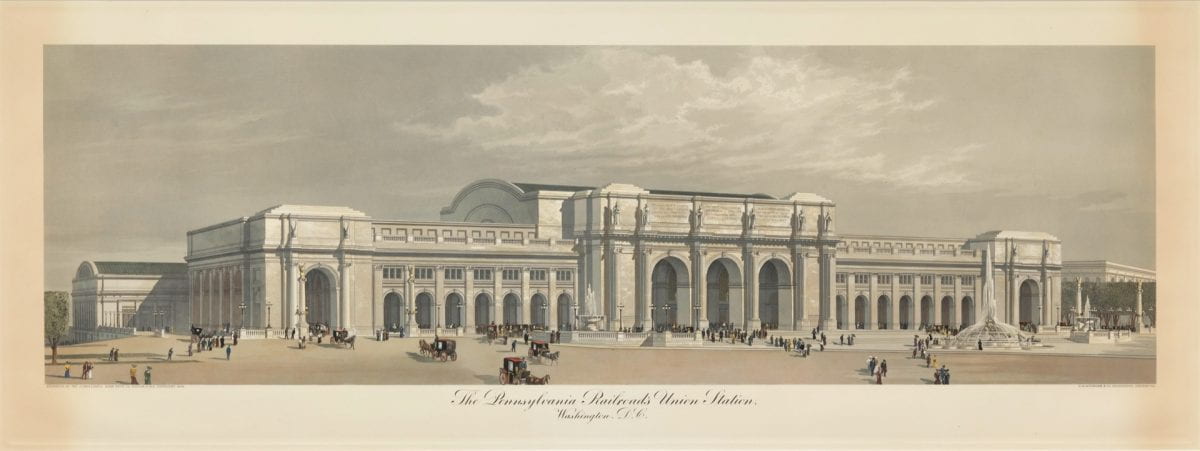By Elizabeth Miller
M.A. ’22, Museum Studies
The first monumental building constructed under the McMillan Commission Plan was architect Daniel H. Burnham’s Union Station, built between 1905 and 1907 and located just north of the Capitol. Made of white Vermont granite, the building included three triumphal arches crowned by six allegorical statues and a 220-foot-long waiting room modeled on the Roman Baths of Diocletian. Union Station replaced two railroad stations, the Baltimore and Ohio Railroad at New Jersey Avenue and C Street, NW, and the Pennsylvania Railroad Station at Sixth Street and Constitution Avenue, NW.
Union Station resulted from the recommendations of the McMillan Commission of 1901, in which Senator James McMillan established a committee of prominent architects, landscape artists, and sculptors to study ways to improve planning of the nation’s capital. The committee recommended that L’Enfant’s original design of an open greensward for the National Mall be restored and that all public buildings be constructed in the Beaux-Arts style. By the 1960s, train travel had declined, and the Union Station fell into disrepair. Congress authorized funds to restore the landmark to the tune of $181 million in the 1980s, although some critics argued the renovations compromised Burnham’s original design. Today Union Station is vibrant with renewed rail travel, a metro stop, a bus depot, and a popular shopping mall located in the central part of the station.
Visit the museum’s collections website to learn more.

